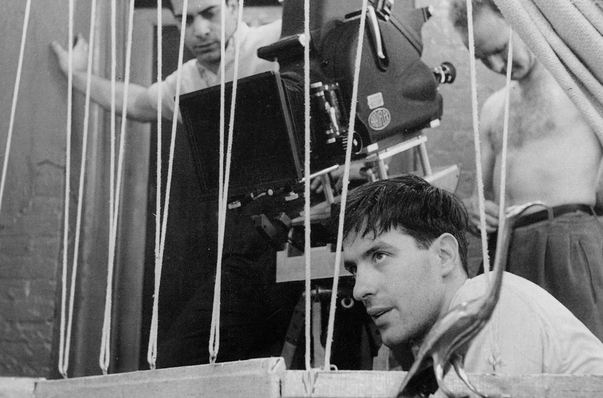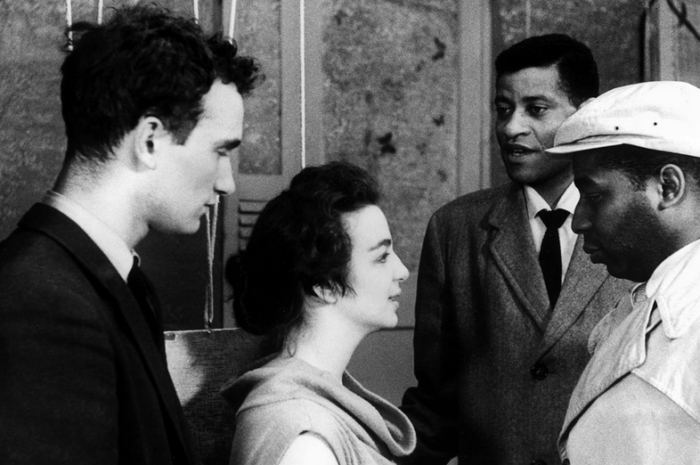
I went through a Mumblecore phase in my early twenties. For anyone not familiar, “Mumblecore” is a label that was given to a slew of low budget, no script, indie dramas from the mid-2000s. Andrew Bujalski, Joe Swanberg, and my personal favorite the Duplass Brothers all burst out of this scene with intimate dramedies about the struggles of love and life in your twenties and thirties.
Andrew Bujalski aka the “Godfather of Mumblecore” is credited as the progenitor of the genre with his 2002 film Funny Ha Ha. A great film that wouldn’t be out of place in the Criterion Collection itself. 2002 may have been when Mumblecore “became a thing” but of course there were films with a similar aesthetic and style years before. French New Wave carries the same looseness of Mumblecore. The early work of Jim Jarmusch and Richard Linklater could also be seen as Mumblecore ancestors.
But I’ve just watched an even earlier film that feels like it could be the first Mumblecore film. John Cassavetes’ 1959 improvised indie-drama Shadows. It checks all the boxes. The plot is unrestricted, the characters are young people searching for an identity, and most importantly it’s all improvised. The film even ends with text stating “The film you’ve just seen was an improvisation”. Not gonna see that at the end of a John Ford movie.
The story behind Shadows is an interesting one. I won’t spend too much time on it but I recommend you read about it if you have any interest in indie filmmaking. John Cassavetes and Burt Lane (Diane Lane’s father) were teaching an acting class in Manhattan when Cassavetes became inspired by an acting exercise: a young African-American woman who is light-skinned dates a young white man until he discovers she has a black brother. Instantly, Cassavetes knew this should be a scene in a movie.
Cassavetes went on Jean Shepherd’s radio show—the guy who wrote/narrated A Christmas Story—and claimed he could make a better film than director Martin Ritt if he could raise the money. Shepherd’s audience raised a total of $2,000 to start the project and the rest was donated by close friends of Cassavetes. Student actors were used along with real locations, natural lighting, and elusive camera work and sound gear.
Cassavetes would go as far as to having a microphone hidden on an actor to record other actors. Now that’s indie filmmaking. The film went through years of tooling from 1957 until its final release in 1959. Again, it really is worth reading about but I figure I should probably spend at least a few paragraphs talking about the actual film.
The film tells the story of three black siblings living in New York. Ben Caruthers plays Ben, a loner jazz musician (think James Dean if he played trumpet) moving listlessly through life. There’s jazz singer Hugh, played by Hugh Hurd, who is having trouble conforming his old fashioned music tastes and sensibilities to modern crowds, and then there’s the youngest sister Lelia (Lelia Goldoni), an aspiring writer still coming into her own as a person. While Ben and Lelia are lighter skinned, Hugh is not, which results in unique interactions between the siblings.
Ben is your typical ‘50s rebel. The kind of guy you might see as the bully in a teen PSA. Though he dreams of being a trumpet player he just can’t commit and finds himself drifting, staying out late in cafes shooting the shit and getting into fights. Caruthers is fine but I found Ben’s scenes the least compelling. It’s nothing that wasn’t already done better in Rebel Without a Cause. Though it is nice to see these interactions without that Hollywood sheen. It’s like watching a Jim Jarmusch movie twenty years before there were Jim Jarmusch movies.
Hugh is an old soul with a love of singing jazz. Performing often, Hugh is pressured to start telling jokes and become more of a personality. Determined to uphold his integrity, Hugh finds himself struggling in the world of white run entertainment to the point that he contemplates leaving America to go to France where he might be appreciated for being an artist.
But the heart of the film is Lelia. Despite only being 20-years-old, Lelia is a strong independent woman with big aspirations. Or at least she tries to be. The seed of Cassavetes idea for Shadows lies in Lelia’s story when she is wooed at a party by Tony (Anthony Ray). Where at first she’s impressed by his speak-your-mind mentality her opinion shifts after the two make love. Tony isn’t some romantic fantasy. He’s just another guy, a stranger, who wants to settle down. He wants her to move in with her and be his girl. Lelia leaves, but Tony follows and then comes the interaction between Tony and Hugh. Unaware that Lelia was black, Tony’s insecurities seep out and we see the real kind of person he is.
The film plays like a series of vignettes. Though all tied together by the same themes and feelings there isn’t a sense of reaching an endpoint. Things happen when they happen. Sometimes these things are small. Most times in fact, but although these moments are small, they are huge in shaping these characters. Even though not much happens in Shadows it’s a human story that cuts deep no matter where you come from.
The fact that this movie came out in the 1950s is crazy. It feels like an indie drama from the late ‘70s or ‘80s. Maybe even 2002? But no. Though the film wasn’t embraced in its initial release it has found a following, and it jump-started the career of a legendary John Cassavetes who would go on to craft intimate art-house dramas for years. Solidifying Cassavetes as the “Godfather of Mumblecore”.





